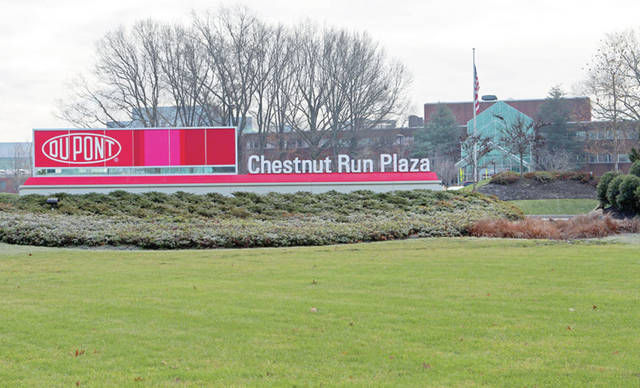KEKAHA — For now, nothing is changing at Kauai’s Dow Agrosciences facility as a result of the Sept. 1 merger between the Dow Chemical Company and DuPont. “It is business as usual at our sites,” said Jarrod Erpelding, with the
KEKAHA — For now, nothing is changing at Kauai’s Dow Agrosciences facility as a result of the Sept. 1 merger between the Dow Chemical Company and DuPont.
“It is business as usual at our sites,” said Jarrod Erpelding, with the new DowDuPont company.
As the merger shakes out, Erpelding said the combined company intends to separate into three independent companies along the divisions of agriculture, materials science and specialty products.
During the December 2015 announcement of the merger, the companies said the plan is to split up into those three independent, publicly traded entities within 18 months of the merger completion.
“The process for determining the exact footprint and total employment levels of the intended independent companies will evolve as the integration process advances and the intended public companies are stood up,” he said.
On Kauai, the Dow Agrisciences’ seed corn facility opened in May 2009. It leases about 4,000 acres on Kauai’s Westside and employs around 50 people with about 100 seasonal employees.
DuPont Pioneer opened operations on Kauai in 1968 and eventually split operations into two locations: one in Kekaha and one in Waimea.
The Kekaha facility was closed in 2015, laying off about 30 workers. The Waimea Research Center continues to employ around 100 workers.
In total, DuPont’s global workforce was reported at about 54,000 in 2016. Dow reported about 49,000 workers last year.
The deal, valued at $130 billion, has created the world’s largest chemical company — at least until DowDuPont splits into its three entities. The merger is expected to result in about $3 billion in annual savings for the company.
Initially headquartered in Michigan, Dow’s focus has historically been on plastics, chemicals and agricultural products, with a focus on innovation in chemistry, physics and biology.
Dow has had a heavy hand in the creation of polystyrene, synthetic rubber, Saran Wrap, Ziploc bags and the cleaning product Scrubbing Bubbles. The company’s research has also contributed to water purification, pharmaceuticals and electronics.
DuPont was founded in the early 1800s as a gunpowder mill and eventually developed polymers like Teflon and Kevlar. The company helped invent the raw materials for parachutes, tires and nylon, and introduced phenothiazine as an insecticide in 1935.
Now that the two companies are successfully merged, the new company’s split is being reviewed by Dow Chief Executive Officer Andrew Liveris, DuPont CEO Ed Breen, DuPont lead director Sandy Cutler and Dow lead director Jeff Fettig.
The goal is to separate the three branches of the company in a way that’s strategic for investors and workers alike.
“(It) will in turn create long-term opportunities for our global employee base and our local communities,” Erpelding said.


